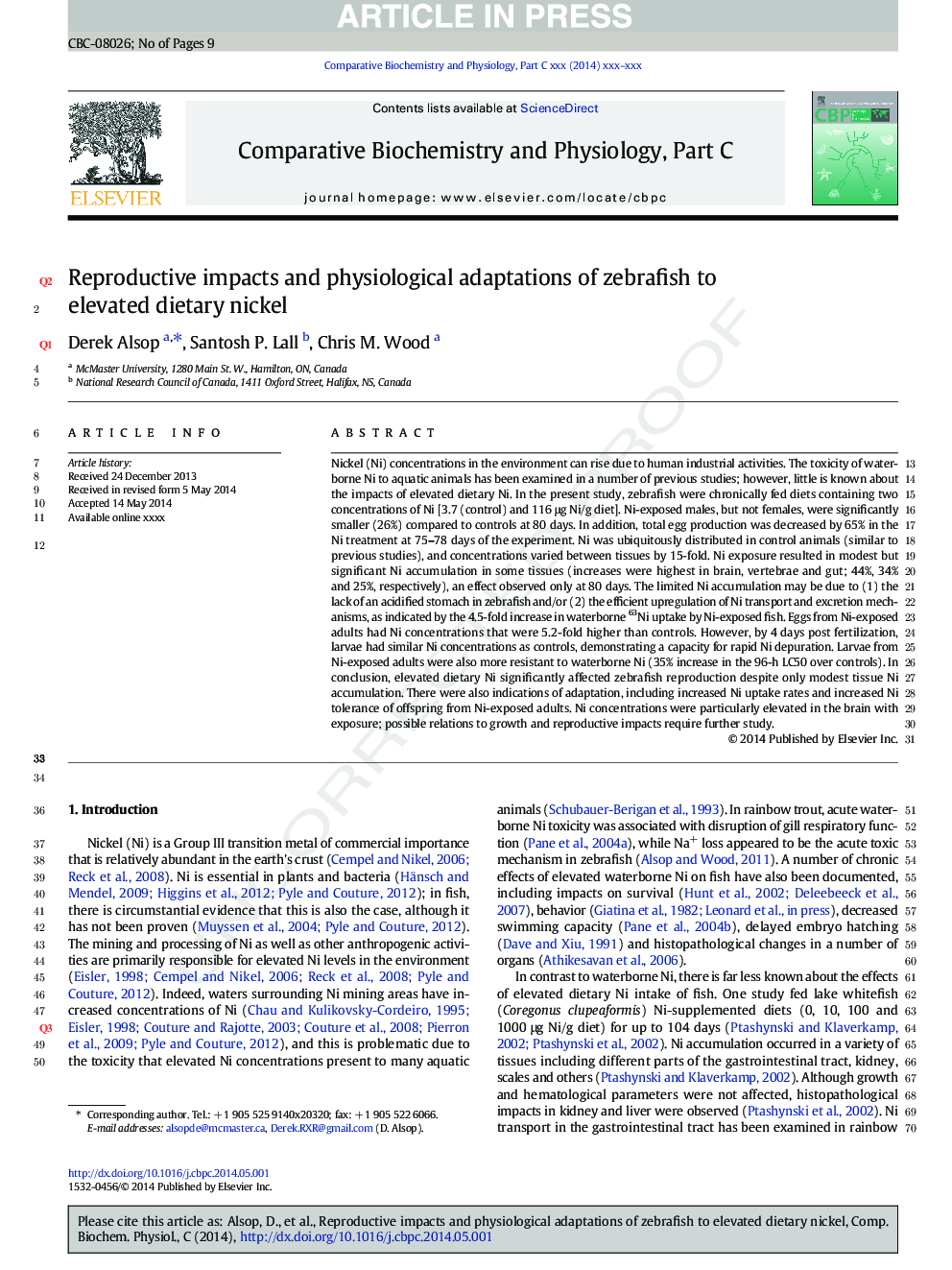| کد مقاله | کد نشریه | سال انتشار | مقاله انگلیسی | نسخه تمام متن |
|---|---|---|---|---|
| 8319147 | 1539291 | 2014 | 9 صفحه PDF | دانلود رایگان |
عنوان انگلیسی مقاله ISI
Reproductive impacts and physiological adaptations of zebrafish to elevated dietary nickel
ترجمه فارسی عنوان
تأثیرات تولید مثل و سازگاری فیزیولوژیکی ماهیان زراعی با افزایش نیکل رژیم غذایی
دانلود مقاله + سفارش ترجمه
دانلود مقاله ISI انگلیسی
رایگان برای ایرانیان
کلمات کلیدی
فلز، تخم مرغ، لارو، مغز، مزمن، سمیت حاد،
موضوعات مرتبط
علوم زیستی و بیوفناوری
بیوشیمی، ژنتیک و زیست شناسی مولکولی
زیست شیمی
چکیده انگلیسی
Nickel (Ni) concentrations in the environment can rise due to human industrial activities. The toxicity of waterborne Ni to aquatic animals has been examined in a number of previous studies; however, little is known about the impacts of elevated dietary Ni. In the present study, zebrafish were chronically fed diets containing two concentrations of Ni [3.7 (control) and 116 μg Ni/g diet]. Ni-exposed males, but not females, were significantly smaller (26%) compared to controls at 80 days. In addition, total egg production was decreased by 65% in the Ni treatment at 75-78 days of the experiment. Ni was ubiquitously distributed in control animals (similar to previous studies), and concentrations varied between tissues by 15-fold. Ni exposure resulted in modest but significant Ni accumulation in some tissues (increases were highest in brain, vertebrae and gut; 44%, 34% and 25%, respectively), an effect observed only at 80 days. The limited Ni accumulation may be due to (1) the lack of an acidified stomach in zebrafish and/or (2) the efficient upregulation of Ni transport and excretion mechanisms, as indicated by the 4.5-fold increase in waterborne 63Ni uptake by Ni-exposed fish. Eggs from Ni-exposed adults had Ni concentrations that were 5.2-fold higher than controls. However, by 4 days post fertilization, larvae had similar Ni concentrations as controls, demonstrating a capacity for rapid Ni depuration. Larvae from Ni-exposed adults were also more resistant to waterborne Ni (35% increase in the 96-h LC50 over controls). In conclusion, elevated dietary Ni significantly affected zebrafish reproduction despite only modest tissue Ni accumulation. There were also indications of adaptation, including increased Ni uptake rates and increased Ni tolerance of offspring from Ni-exposed adults. Ni concentrations were particularly elevated in the brain with exposure; possible relations to growth and reproductive impacts require further study.
ناشر
Database: Elsevier - ScienceDirect (ساینس دایرکت)
Journal: Comparative Biochemistry and Physiology Part C: Toxicology & Pharmacology - Volume 165, September 2014, Pages 67-75
Journal: Comparative Biochemistry and Physiology Part C: Toxicology & Pharmacology - Volume 165, September 2014, Pages 67-75
نویسندگان
Derek Alsop, Santosh P. Lall, Chris M. Wood,
